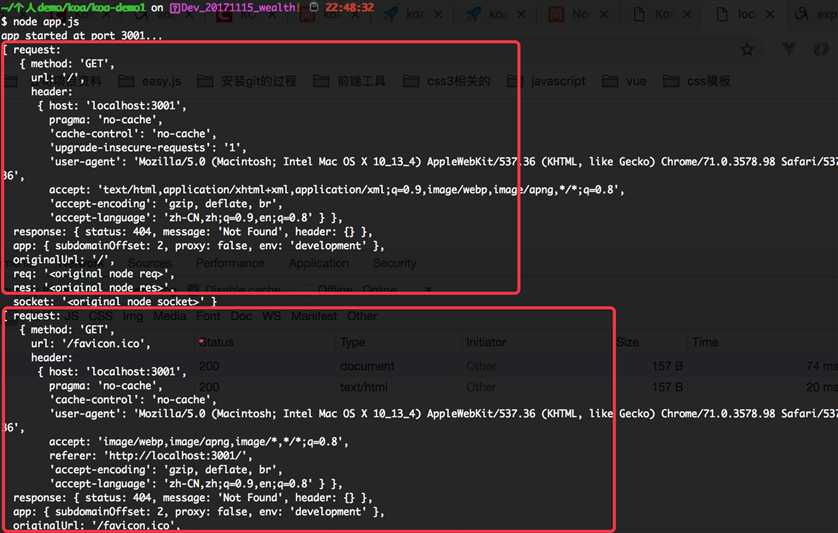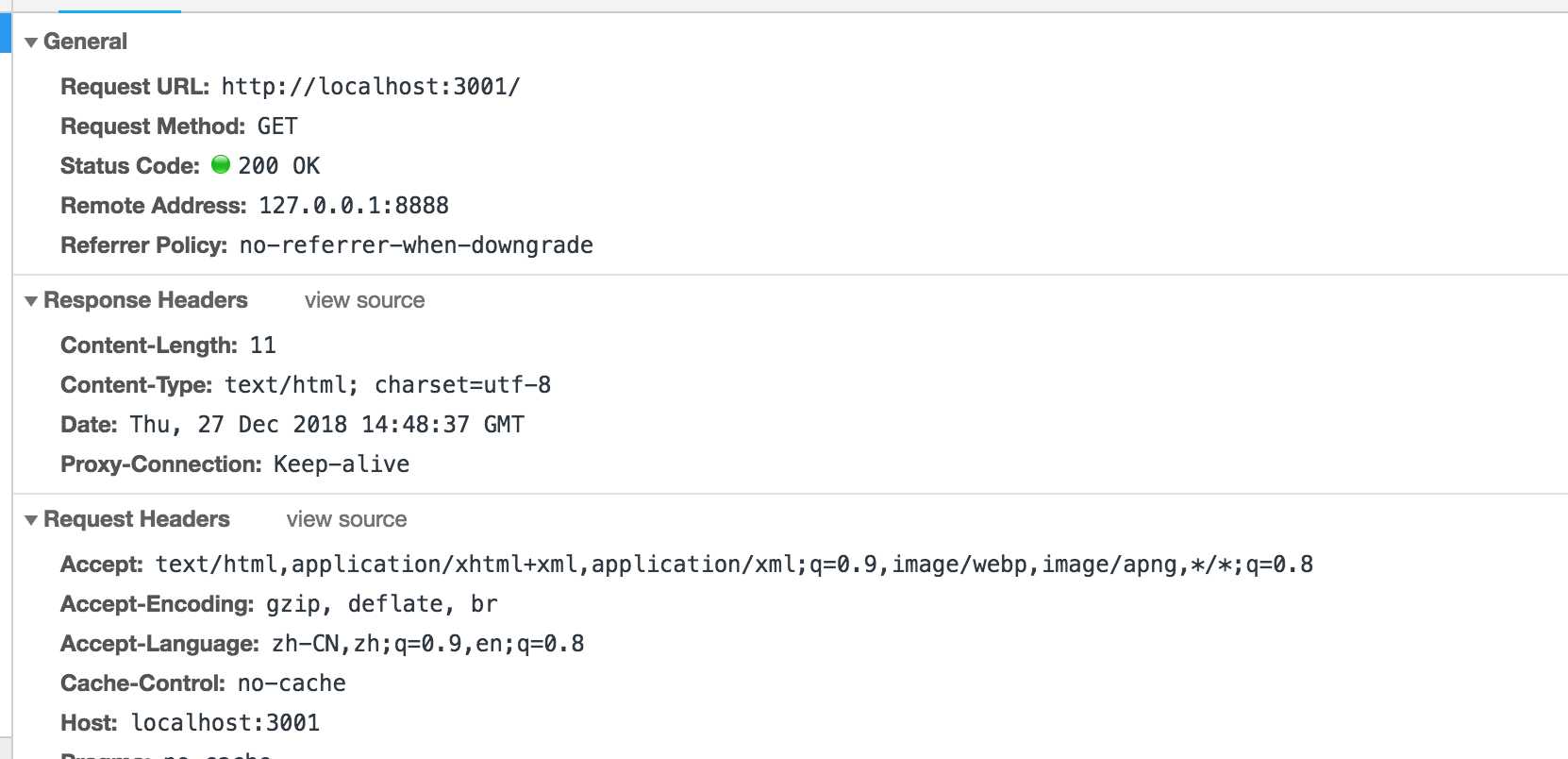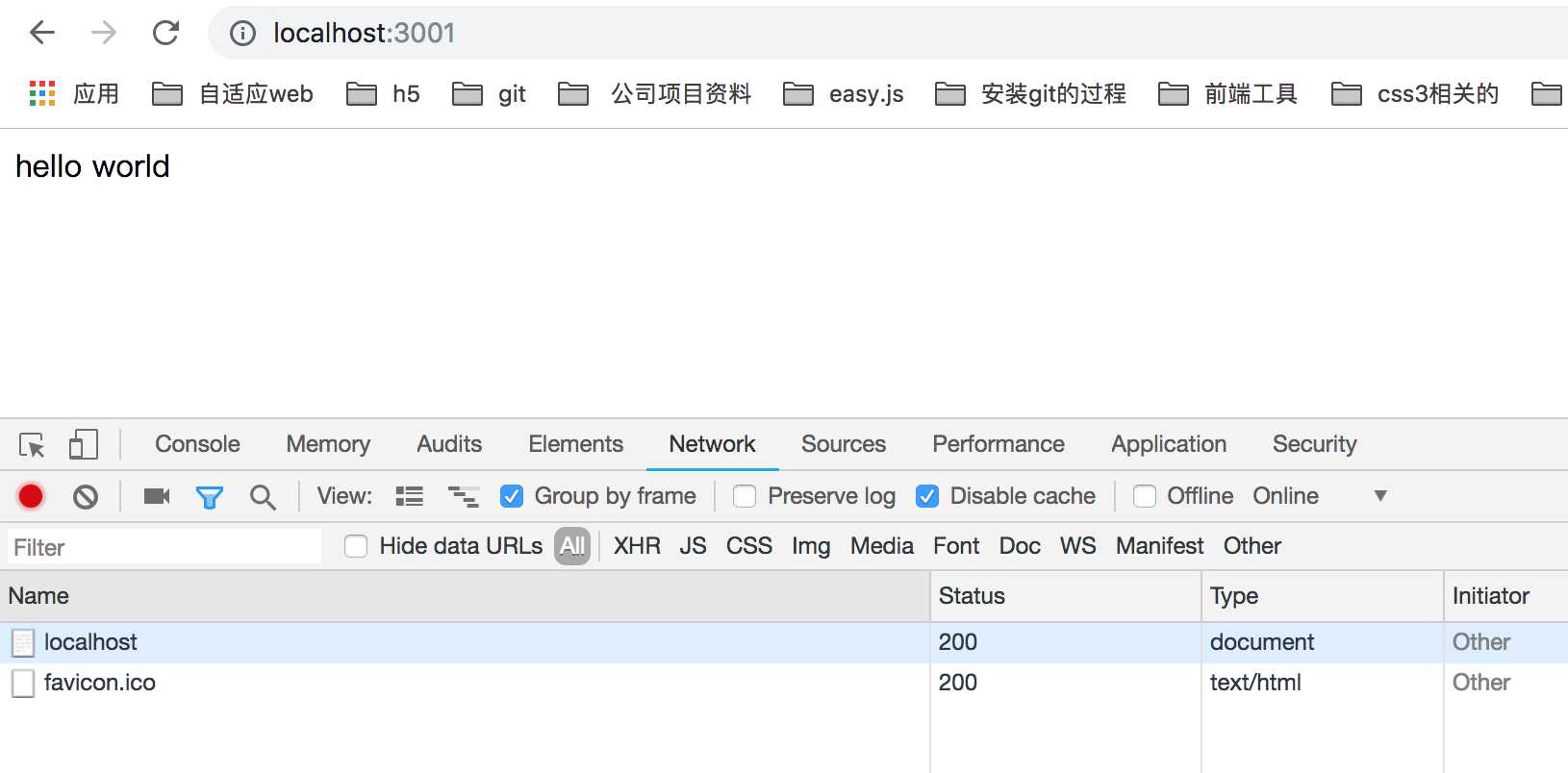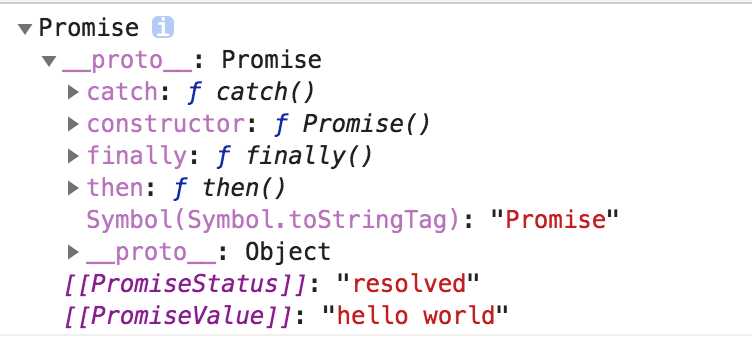标签:xxx reject 执行 设置 node 就会 工程 web框架 分享图片
koa是下一代的Node.js web框架。
我们首先使用koa来实现一个简单的hello world吧!假如目前的项目结构如下:
### 目录结构如下: koa-demo1 # 工程名 | |--- app.js # node 入口文件 | |--- node_modules # 项目依赖包 | |--- package.json
app.js 代码如下:
const Koa = require(‘koa‘); const app = new Koa(); app.use(async (ctx, next) => { console.log(ctx); await next(); ctx.response.type = ‘text/html‘; ctx.response.body = ‘hello world‘; }); app.listen(3001); console.log(‘app started at port 3001...‘);
如上,对于页面中每一个http请求,koa将调用如上异步函数来处理。进入项目中的根目录执行 node app.js 后,在页面中访问 http://localhost:3001/ 后刷新看到node控制台打印 console.log(ctx); 如下信息:

参数ctx是koa传入封装的了request和response的变量,如上图可以看到,我们就可以通过ctx来访问request和response的数据了,我们可以再看下浏览器中 header信息如下,我们可以对比下 上面图和下面的图:
并且我们在看看浏览器中网络请求可以看到有如下两条请求,在node中也可以看到打印了二次,说明对于页面中每一个http请求,koa将调用如上异步函数来处理的,如下所示:

如上的代码异步函数中,使用了 await next();来处理下一个异步函数,和express中的 next()方法类似的功能,然后设置 response的Content-Type的内容。
async的理解为:用于声明一个function是异步的,并且返回的是一个promise对象,如下代码:
async function testAsync() { return ‘hello world‘; } const a = testAsync(); console.log(a);
在浏览器中打印如下:

await的含义是:用于等待一个异步方法执行完成(同步等待)。
await在等待async异步方法执行完毕,await必须在async方法中才可以使用。
如下代码demo理解:
function getData () { return ‘hello world‘; } async function testAsync() { return ‘hello xxxx‘; } async function testAsync2() { const a1 = await testAsync(); const a2 = await getData(); console.log(a1); // hello xxxx console.log(a2); // hello world } testAsync2();
如上代码 getData是同步方法,testAsync是异步方法的,都会返回一条信息,但是在testAsync2异步方法内部,都使用await 使数据同步返回,因此结果打印: hello xxxx;和 hello world了。
但是如果我们在 testAsync2 函数内部不使用 await 这个,直接调用 testAsync()方法和getData()方法的话,那么testAsync就会返回一个promise对象了,如下代码:
function getData () { return ‘hello world‘; } async function testAsync() { return ‘hello xxxx‘; } function testAsync2() { const a1 = testAsync(); const a2 = getData(); console.log(a1); console.log(a2); } testAsync2();
执行结果如下所示:

1. async的作用是?
async函数它会返回一个promise对象,我们可以通过promise对象的then方法来获取如上的 ‘hello world‘ 的值,如下代码所示:
async function testAsync() { return ‘hello xxxx‘; } const test = testAsync(); console.log(test); // Promise {<resolved>: "hello xxxx"} test.then(data => { console.log(data); // 打印 hello xxxx });
2. await的作用是?
await可以理解为同步等待当前的async的执行,且等async后的promise对象执行resolve,然后拿到resolve的值,作为await表达式的运算结果。代码才会继续往下执行。
我们可以看如下demo来理解下:
function testA() { return ‘hello world‘; } async function testA2() { return ‘xxxx‘; } async function testA3() { // 等待返回 ‘heelo world‘ const a1 = await testA(); // 待会返回promise对象的resolve的值,才会继续往下执行 const a2 = await testA2(); console.log(a1 + ‘--‘ + a2); // 会打印 hello world--xxxx } testA3();
3. async + await + promise 解决异步问题
如下基本的代码:
let url = ‘xxxxx‘; // url 地址 let asyncFn = async () => { let data = null; data = await getData(url); console.log(data); } const getData = function(url) { return new Promise((resolve, reject) => { // 如下简单的使用 ajax来演示下,项目中具体使用fetch还是其他都可以的 $.ajax({ type: ‘get‘, dataType: ‘json‘, data: { }, success: function(d) { resolve(d); }, error: function(e) { reject(e); } }) }); }
理解koa2 之 async + await + promise
标签:xxx reject 执行 设置 node 就会 工程 web框架 分享图片
原文地址:https://www.cnblogs.com/tugenhua0707/p/10188324.html